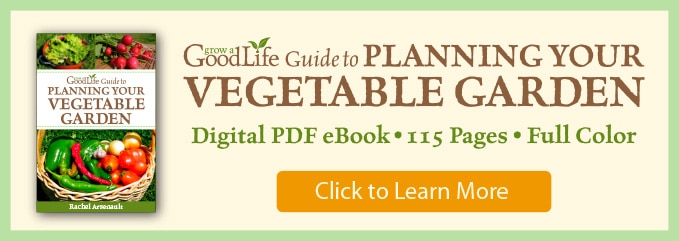12 Easiest Vegetables to Grow in Your Garden
This post may contain affiliate links, which means that I may receive a commission if you make a purchase using these links. As an Amazon Associate I earn from qualifying purchases.
Do you want to grow and preserve your own vegetables but worry that you won’t have the time to tend to your garden? No problem! There are plenty of vegetables that won’t take a lot of effort to grow.
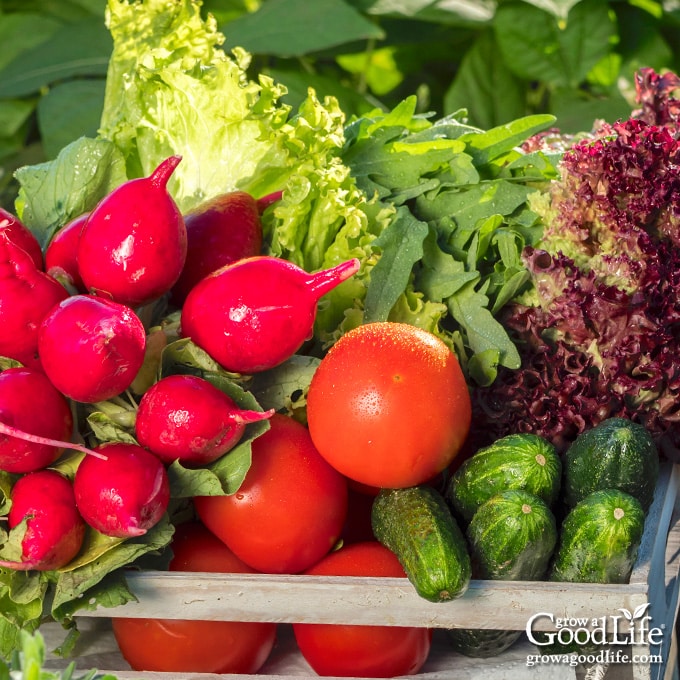
Growing a vegetable garden can be an enjoyable and rewarding hobby that allows you to reconnect with nature and reap the benefits of fresh harvests. However, some vegetables can be more challenging to grow than others. If you are new to gardening or pressed for time, it can become overwhelming to keep up with the care of some plants.
Luckily, growing a vegetable garden doesn’t have to be intimidating or difficult – some vegetables are quite easy to grow!
Whether you are new at gardening, pressed for time, or want to grow a vegetable garden with the least effort, these are some of the easiest vegetable varieties to grow.
When to Plant Your Vegetables?
Most vegetables are classified under two categories, cool-season and warm-season crops. Grow cool season crops in early spring and fall. These vegetables can handle light frosts and thrive in the cooler part of the growing season. Warm-season crops are killed by frost and need warm soil and high temperatures to grow. Plant warm-season crops in the summer after the danger of spring frosts has passed.
- First, look up your frost date by zip code here: PlantMaps.com, and you’ll better understand when your gardening season starts.
- Then, check out this article to start planning your vegetable garden: How to Make a Seed Starting and Planting Calendar so you will know when to sow seeds.
- Finally, consider these easy vegetables to grow that are simple to maintain and don’t need much attention other than watering and harvesting.
12 Easy to Grow Vegetables
Whether you are new at gardening or are pressed for time and want to grow a vegetable garden with the least effort, these are some of the easiest vegetables to grow.
Beans
With so many varieties, shapes, and colors, you are sure to enjoy growing beans. You can grow string beans for fresh eating or dried beans for food storage. There are two basic types of bean plants, bush beans and pole beans. Both have their advantages.
Pole beans grow long vines before they begin to blossom and produce beans. Provide pole beans with a sturdy trellis, and they will wrap themselves around and up the support as they grow. Pole beans continue to vine and produce for a longer period of time than bush beans. In addition, they are easier to harvest than bush beans because they are upright and easy to find.
Bush beans are compact plants that grow and produce beans quickly, usually within 45 to 50 days after sprouting. Succession planting every two weeks will keep your bush beans going longer. Besides watering when the soil is dry, bush beans don’t need much attention except to harvest when ready. Bush beans are usually ready all at once, making them a perfect choice for preserving.
Sow bean seeds once the soil warms in spring, about a week after your last frost date. Plant seeds 1 inch deep and 3 to 4 inches apart in rows about 2 to 3 feet apart.
Provide sturdy support for pole beans to climb, and harvest both pole and bush beans when the pods are young and tender. Pick string beans often to help promote more growth and increased yields.
Dry beans or shelling beans are grown to full maturity. Harvest when the pods have matured and turned brown.
Learn how to grow beans with our complete growing guide: How to Grow Green Beans.
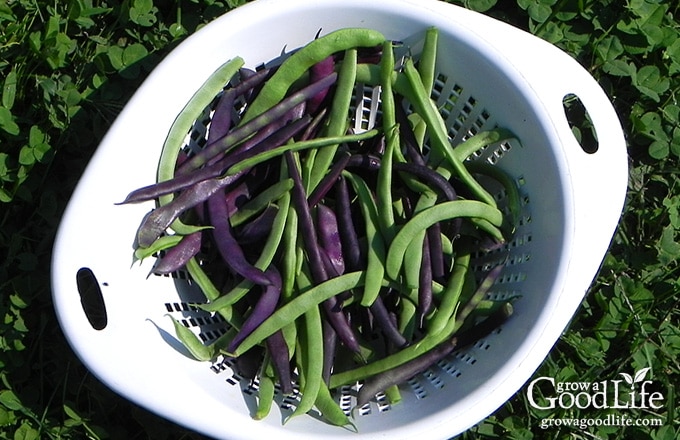
Cucumbers
This summer vining crop loves to sprawl, so give it plenty of room in your garden or consider growing vertically. Growing cucumbers upright on a trellis saves space and helps keep the fruit clean and easier to pick.
There are two main types of cucumber: slicing and pickling. Depending on the variety, slicing cucumbers are about 8 inches long and have thick, dark-green skin and tapered ends. They are delicious in salads and on a vegetable platter. Pickling cucumbers are smaller, thin-skinned, mild flavored, and stay crisp when pickled.
Sow seeds once the soil warms in spring, about a week after your last frost date—plant seeds 1 inch deep and 6 to 8 inches apart in hills about 4 feet apart. Thin down to three plants per hill and let the cucumber vines sprawl all over. No thinning is needed if you are growing on a trellis. You may need to guide the plants to the framework when they are small, but once their tendrils wrap around the upright support, the vines will climb up as the plant grows.
If you are tight on space or want to grow cucumbers in containers, seek out compact bush varieties and sow 1 to 2 plants in a large, 5-gallon pot. Plants in containers tend to dry out quickly, so water frequently during hot, dry temperatures, or consider planting in a self-watering container.
Learn how to grow cucumbers with our full growing guide: How to Cucumbers.
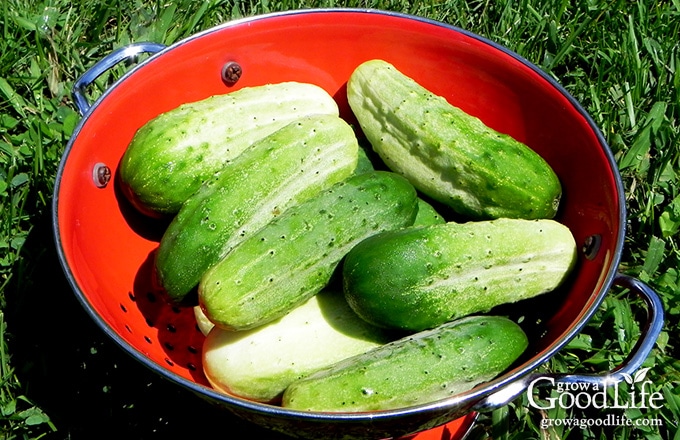
Garlic
Garlic is one of the easiest crops you can grow in your garden. A small amount of preparation at planting time will give you an excellent garlic harvest with little effort.
Choose varieties that grow well in your area. In the north, plant garlic 6 to 8 weeks before your estimated hard frost date in the fall. In southern areas, plant your garlic in February or March.
Garlic bulbs grow from individual cloves of the bulb. Separate the cloves and plant your garlic 4 to 6 inches apart and 4 inches deep. Water well and add a light layer of mulch to keep the weeds down until the ground freezes. Add another layer of mulch after the ground freezes to insulate and prevent the garlic roots from being heaved out of the ground by alternate freezing and thawing. Each clove will grow a new head of garlic.
If you are growing hard-neck garlic, it will give you two harvests. A few weeks before the garlic bulbs finish growing, they will send up a flower stalk. This stalk is called a garlic scape. Harvesting the garlic scape helps the plant focus its energy on developing a bulb. The garlic scapes are edible and have a delicious, mild garlic flavor.
Read How to Grow Garlic for more detailed information, growing tips, and garlic varieties to consider.
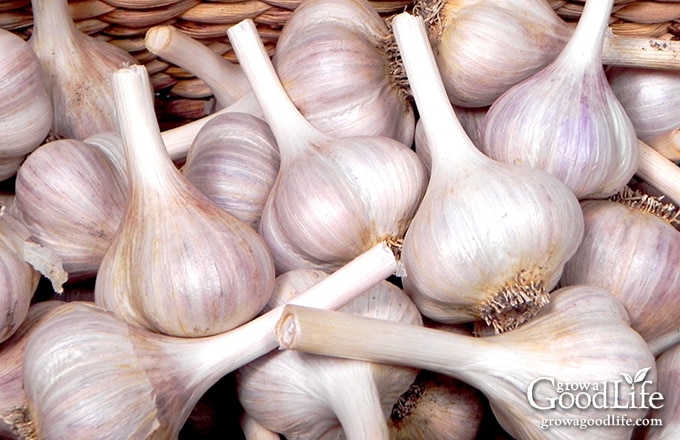
Kale
Grow kale if you have room to grow only one vegetable in your garden. Kale is a cool-season and frost-resistant garden plant that is not picky about soil or environmental conditions. It is a hardy, leafy green that you can grow in containers on the patio, in raised bed gardens, or in traditional in-ground gardens.
Kale thrives in cool weather but can tolerate warm temperatures once the plants are established. You can start plants indoors under lights or sow the seeds in early spring or fall as soon as the soil thaws. In climates with mild winters, kale will grow throughout the winter and develop a sweeter, nuttier flavor after frost or light snow falls on the leaves.
Kale leaves are mature and ready to be harvested when they are about the size of your hand. Pick the outer leaves first, leaving the inner leaves to continue growing.
Kale can be eaten raw or cooked. The leaves hold their texture well when cooked. Kale can be enjoyed steamed, stir-fried, roasted, boiled, or used to make smoothies, chips, or pesto.
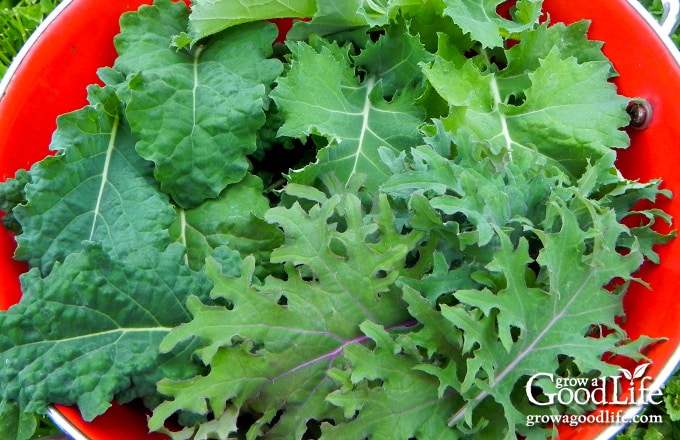
Lettuce
This cool season crop is so easy to grow and takes up very little space. There are hundreds of varieties, colors, and leaf shapes to keep your salads interesting. You can grow lettuce from seed and harvest tender, loose-leaf greens in as little as 30 days. Let head lettuce mature and harvest the whole plant at once in about 60 to 80 days. Mature lettuce will also survive the first frosts in fall.
Growing lettuce in containers eliminates some challenges, such as weeds and pests. Place the containers close to the house where you can water and harvest as needed.
Like other leafy greens, lettuce prefers cooler weather in spring and fall. It will turn bitter and bolt or go to seed if the temperatures are too warm. Lettuce is the perfect crop for partial shade and grows healthier with some shade from direct sunlight.
Sow seeds 1/4 inches deep and keep the soil evenly moist. Sow seeds every two weeks for a continuous harvest well into summer. Lettuce has a shallow root system, so water frequently or grow in self-watering containers.
Harvest leaf lettuce by snipping the outer leaves letting the plant continue to grow and produce more foliage. Harvest heads of lettuce by cutting the stalk at the soil surface.
Learn how to grow lettuce from seed to harvest with our complete growing guide: How to Lettuce.
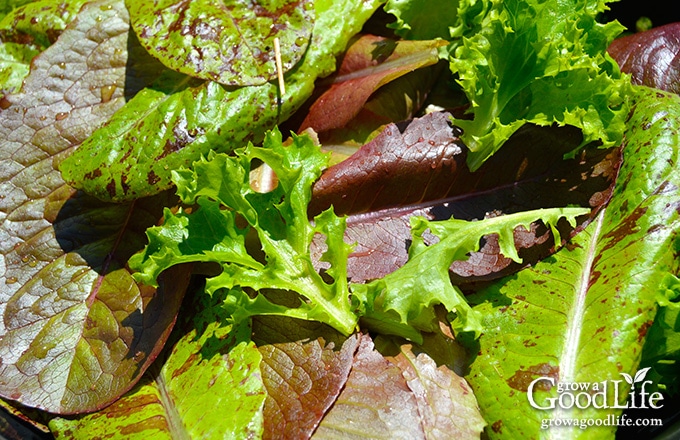
Radishes
Radishes are a gratifying crop to grow because they mature quickly, rewarding you with spicy round roots and greens in less than 30 days. They are easy to grow and happy in a container or the garden.
Radishes are a cool-season crop that is closely related to cabbage. With so many colors, shapes, and various levels of spiciness, you are sure to find a favorite or two in the bunch. There are even varieties that you can grow in the fall for winter food storage.
The most common radish variety are the small, round, red-skinned ones with white flesh. But some types are long, cylindrical, or tapered, much like a carrot. The outer skin can be white, yellow, pink, red, purple, or black. The inside flesh can be purple, pink like a watermelon, or greenish-yellow.
The bulbous roots and the green tops are edible. Radishes are naturally low in calories and high in fiber. The roots have a peppery-spicy flavor and can be eaten raw or cooked. The green tops can be added to a fresh green salad or cooked like any other leafy green.
Radishes grow best in the cool weather of spring and fall. They can be grown indoors or outdoors and are not too picky about environmental or soil conditions. Plant and grow them in early spring, then plant a second crop in late summer for fall harvests.
Learn more about growing radishes and varieties to consider with our complete growing guide: How to Grow Radishes.
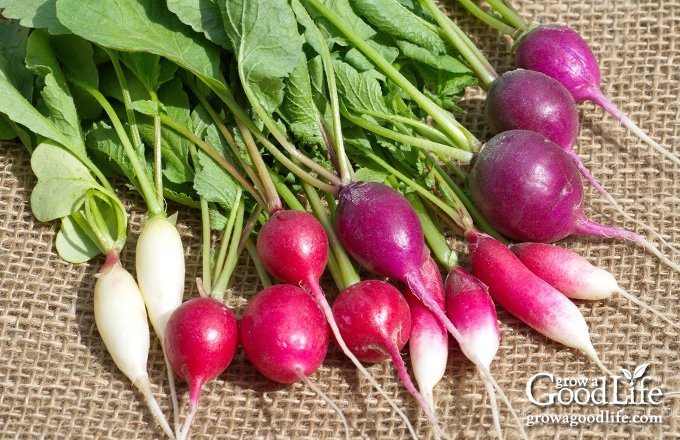
Scallions or Green Onions
Scallions are small green onions that don’t form a bulb. They are many types of scallions. Some are biennial and will multiply and come back year after year. Green onions have a mild onion flavor and can be enjoyed in stir-fries, salads, or in any recipe that you would use usually use onions.
My favorite standby is Evergreen Bunching Onions. It grows quickly from seed to provide fresh green onions for meals as needed. If any bunching onions are left in the ground at the end of the season, they overwinter and multiply the following spring.
Growing scallions from seed is so easy. Start seeds indoors under lights, or direct sow sees in early spring as soon as you can work the soil. Work in a good amount of finished compost into the soil and then sow seeds 1/4 inches deep, about 2 inches apart. Scallions have a shallow root system, so water frequently until they become established. Harvest scallions as soon as they are large enough to eat.
Check out our full growing guide, How to Grow Green Onions, for all the details, from choosing varieties, sowing seeds, and caring for the plants.
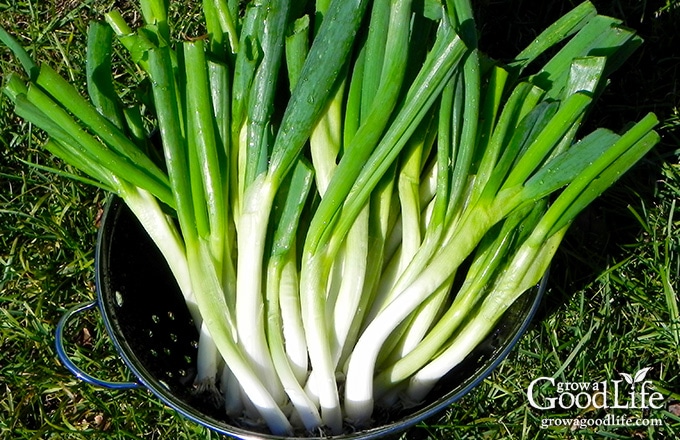
Spinach
Growing spinach is a great way to get some nutritious greens in your diet. Not only is it full of vitamins, minerals, antioxidants, and other nutrients, but it’s also easy to grow.
Spinach is a fast-growing crop grown for its leafy foliage that may be smooth or crinkled, depending on the variety. You can enjoy spinach raw or cooked in salads, soups, sauces, and smoothies.
Spinach is a cool-season crop that thrives in spring and fall. You can start seeds early indoors and transplant them to the garden to give the plants a head start, or direct sow seeds in early spring as soon as the soil warms. Besides watering during hot spells, spinach doesn’t require much attention once the plants are established.
Begin harvesting once the plants have developed a significant amount of leaves. Harvest tender baby spinach in about 30 days, or let the plants grow larger.
This article provides helpful information on how to sow, water, fertilize, and harvest your spinach crop: How to Grow Spinach.
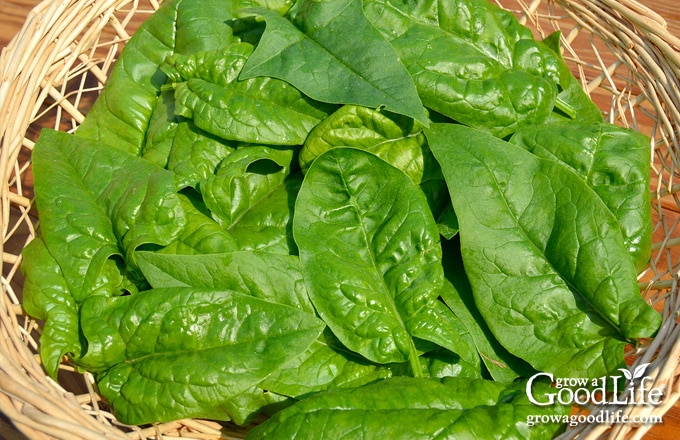
Summer Squash
These sun-loving summer vegetables need space to grow, but you will find that just one or two plants will give you plenty to harvest throughout the growing season.
Summer squash, also called courgettes, is grown for immature fruits, which you can harvest all summer long. The summer squash family includes various shapes, sizes, and shades of yellow and green. Popular summer squashes are zucchini, pattypan, and yellow crookneck.
Sow seeds in hills once the soil warms in spring, about a week after your last frost date. Plant 1 inch deep and 6 to 8 inches apart. Space your hills 4 to 6 feet apart, depending upon the size of the fruit. Thin down to three plants per hill.
Learn all about growing summer squash in our full growing guide: How to Grow Summer Squash.
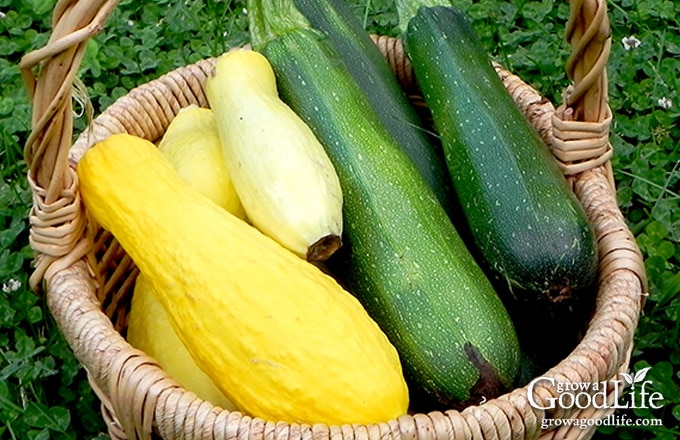
Swiss Chard
Swiss Chard is a versatile and nutritious vegetable easily grown in your garden or containers. It is a member of the beet family grown for its leafy greens and colorful stems, adding nutrition and beauty to any cooked or raw recipe.
Chard is a cool-season vegetable that grows best in spring and fall. Start seeds early indoors under lights, or direct sow seeds in the garden as soon as the soil warms in spring.
Chard is one of the few plants that can grow well in partial shade, and mature plants tolerate warmer temperatures. Plant chard in full sun in spring and fall, but growing in partial shade in summer will help prevent the plant from bolting or going to seed.
The leaves can be harvested at any stage of development, taste like spinach, and are more tender than kale. Both the leaves and stems are a delicious and nutritious addition to salads, soups, and more.
This article provides all the information you need to get started growing Chard in your garden or containers: How to Grow Swiss Chard.
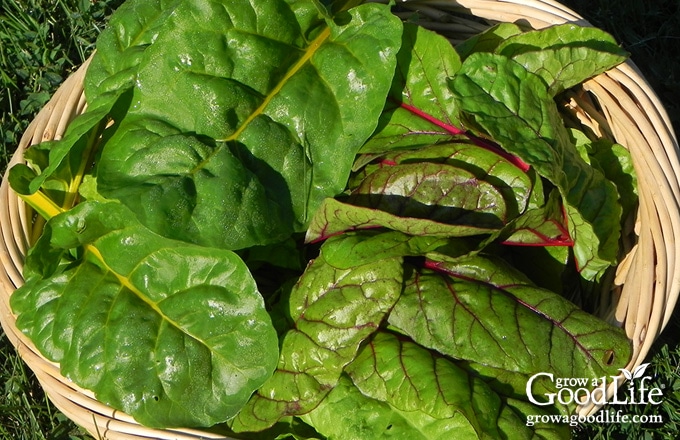
Tomatoes
Tomatoes are a delicious, heat-loving summer fruit with many varieties, colors, and shapes, including large slicers that are ideal for layering on burgers and sandwiches, cherry tomatoes great for snacking and salads, and plum tomatoes used for making sauce and salsa. Some varieties are easier to grow than others. The most effortless tomatoes are determinant or bush varieties with some disease resistance.
Bush tomato varieties are bred to grow compact plants about 2 to 4 feet tall and need minimal support. They are easier to grow because you won’t have to spend time tying them to a trellis or pruning out extra suckers or branches as the plant grows. Tying the plant’s main stem to a stake or using a large tomato cage is generally sufficient to support their growth and keep the fruit and vines off the ground. Since they grow on compact plants, the fruit tends to ripen all at once. Perfect for preserving a tomato sauce or salsa.
Alternatively, indeterminate tomatoes require a sturdy, tall trellis to support the long vines. If you have the time and are willing to put in the effort, indeterminate tomatoes will reward you with a more extended harvest. Check out 9 Creative DIY Tomato Trellis Ideas for inspiration.
Purchase tomato plants from a nursery or start your own seedlings indoors. If you are growing your own, sow seeds indoors, under lights about 6 to 8 weeks before your last frost date. Then, pot up to larger containers if needed, harden off, and transplant into the garden in rich, well-drained soil when the soil warms, about two weeks after your last frost date. Learn more with our full growing guide: How to Grow Tomatoes.
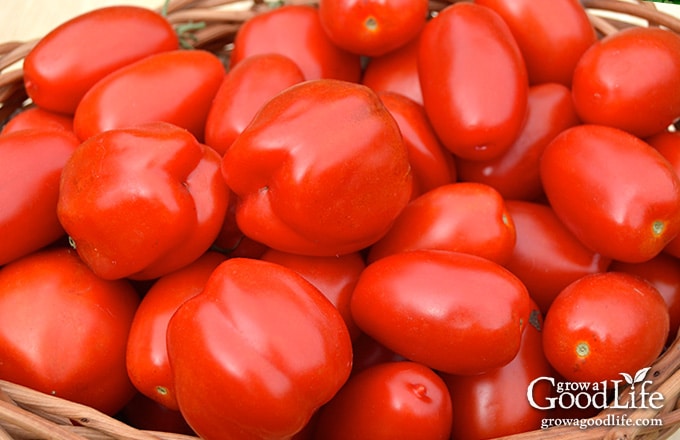
Winter Squash
Once winter squash plants are established, they don’t require much attention until the end of the growing season, when it is time to harvest.
Some common varieties of winter squash include Acorn, Butternut, Hubbard, Spaghetti, and Pumpkin.
Winter squash loves to sprawl, so allow plenty of space for the vines to grow. Sow seeds in hills once the soil warms in spring, about a week after your last frost date.
The vines will run in every direction, blossoms will form, and the fruit will begin to grow. Winter squash matures in 60 to 110 days, depending on the variety.
Harvest ripe squash at the end of the season before frost. Winter squash is ready to harvest when the rind can’t be dented with your fingernail and the stems are hard and dry. Leave the squash in the garden to field cure in the sun for about a week, then store it in a dry, cool location. Most winter squashes will keep for several months in storage.
Learn more about growing and harvesting winter squash with our complete guides: How to Pumpkins and How to Harvest, Cure, and Store Winter Squash.
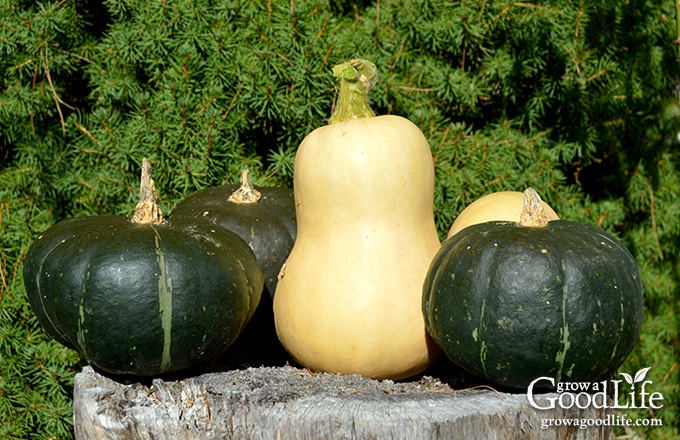
—
Growing a vegetable garden doesn’t have to be intimidating or difficult – some vegetables are actually quite easy to grow! Whether a beginner or an experienced gardener, starting with easy-to-grow vegetables can bring you a plentiful harvest without taking up too much of your time.
You May Also Like:
- Tips for a Low Maintenance Vegetable Garden
- How to Design Your Vegetable Garden Layout
- 30+ Vegetables to Grow in Partial Shade
Good planning is key to a successful vegetable garden
Whether you are new to growing your own food or have been growing a vegetable garden for years, you will benefit from some planning each year. You will find everything you need to organize and plan your vegetable garden in my PDF eBook, Grow a Good Life Guide to Planning Your Vegetable Garden.

